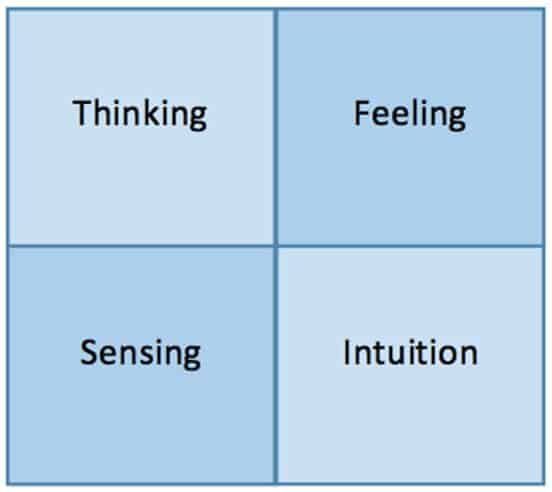Historical and contemporary research reveals more than a dozen models and methods of measuring our behaviors and profiling personalities. From the Greek philosophers to modern psychologists, one common thread of many of these models, is the grouping of behavior and personality into four basic categories.
In 444 B.C.E. Empedocles, a Greek Philosopher discussed the four “roots” or elements, fire, earth, wind and water.
Empedocles believed that these “roots” could make all the structures in the world. Empedocles recognized that people seemed to act in four distinctly different ways, but instead of attributing these actions to internal factors, he believed it was external environmental factors of wind, earth, water and air, which affected the way people acted.


In 400 B.C.E., Greek physician Hippocrates put forth that the four quadrants (fire, water, earth and air) were reflected in the body.
Hippocrates, also known as the Father of Medicine, developed a medical model based on these elements, attributing their qualities to four fluids or (humors) within the body, Phlegm, Blood, Black Bile, and Yellow Bile.
It was Hippocrates’ work, combined with the work of Galen another Greek philosopher, two hundred years later, which expanded the theory of humorism into one of personality.
The four temperaments of Choleric, Sanguine, Phlegmatic, and Melancholic are based on the balance of humors in the body. This demonstrated the shift in four quadrant models from believing the personality was affected by environmental factors to recognizing there were internal dynamics.


In 1921 that Carl Gustav Jung re-examined the four quadrants.
Unlike the Greek Philosophers who believed it was internal fluids which affected us, Jung realized attributed the internal styles to the thought process. His four styles were Thinking, Feeling, Sensation, and Intuition, now used in the Myers Briggs Personality Test (MBTI).
 In the early 1920’s, an American psychologist named William Moulton Marston developed a theory to explain people’s emotional responses. He wanted to focus on the behavior of “normal” individuals(rather than the common focus of others on the mentally ill) and developed a four quadrant model based on Dominance, Influence, Steadiness and Compliance, the acronym being DISC. Marston discovered that people do things for various reasons and are motivated by their reasons, not ours, and recognized that one individual could possess many traits, to more or less of a degree. It was the first time the four styles were identified as dynamic and situational which means the styles people displayed could change depending upon environmental factors and differing situations.
In the early 1920’s, an American psychologist named William Moulton Marston developed a theory to explain people’s emotional responses. He wanted to focus on the behavior of “normal” individuals(rather than the common focus of others on the mentally ill) and developed a four quadrant model based on Dominance, Influence, Steadiness and Compliance, the acronym being DISC. Marston discovered that people do things for various reasons and are motivated by their reasons, not ours, and recognized that one individual could possess many traits, to more or less of a degree. It was the first time the four styles were identified as dynamic and situational which means the styles people displayed could change depending upon environmental factors and differing situations.
The DISC model has continued to be researched and today is recognized as the most valid and reliable behavioral profiling tool to develop self-awareness. More than 50 million people worldwide from all differing contexts such as corporate leaders, industry professionals, managers, sales people, teachers, coaches and athletes have used DISC to improve their understanding of themselves and their behaviors.
We trust this article gave you more insight into the origins of four quadrant models like the DISC Model. We highly recommend you read on to learn more about William Moulton Marston and his contribution to the creation of the DISC Model. It is the DISC model, which served as a foundation for the development of Athlete Assessments’ CoachDISC, AthleteDISC and Sports ManagerDISC sports profiling systems.
If you enjoyed this article you may also enjoy our articles on DISC Methodology, or our articles section on DISC Application and Theory.
At Athlete Assessments, we’re here to provide you with excellence in service and to help you be your best. If there is anything we can assist you with, please Contact Us.





